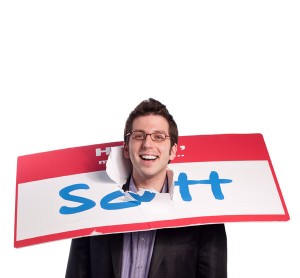All creativity begins with the moment of conception.
That little piece of kindling that gets the fire going. That initial source of inspiration that takes on a life of its own. That single note from which the entire symphony grows. That single spark of life that signals an idea’s movement value, almost screaming to us, something wants to be built here.
And so, in this new blog series, I’m going to be deconstructing my favorite moments of conception from popular movies. Each post will contain a video clip from a different film, along with a series of lessons we can learn from the characters.
Today’s clip comes from the opening scene in Sahara:
What can we learn?
Echoes the habits of action. Sahara was a box office failure. The critics skewered the film in the media. Even the original author disowned the project once the movie premiered. So what. This montage is the most compelling opening credit sequence of any movie in years. It’s a beautifully executed single take motion control camera that details the hero’s history, but also alludes to the soon unfolding story. The room we see is more than just an office, it’s an archive, a command center, a war room, a laboratory, a playground and a creative sanctuary. You can’t help but want to jump inside the screen. Particularly because of the substances. There’s just something romantic about the bottles of whiskey, half smoked cigars, cups of coffee and snack wrappers strewn about the room. Not to endorse any one of those substances as magic bullets for creativity, but moderate amounts of alcohol, tobacco, caffeine and protein have been clinically proven to be helpful for certain types of tasks. The point is, you get the feeling that whomever works in this space, knows how to slide into their working day before their procrastinatory urges kick in. What triggers get you working before you’ve had a chance to protest?
Create a progress rich environment. Look around. There isn’t a square inch of whitespace left. The office walls are plastered with awards they’ve won, maps they’ve conquered, articles they’ve written, projects they’ve led, even dignitaries they’ve met. But these decorations aren’t there to stroke their egos, rather, to stoke their creativity. Truth is, every artist needs to surround themselves with concrete evidence of progress. Doing so saturates their consciousness with victory, triggers their creative focus and makes them more inclined to take further action. I used to write a monthly column for my local business journal. Published for about six years. And although they didn’t pay me for the work, the dividends of visibility, credibility and accountability were more than enough compensation. I even had ritual on the first of every month. I would run to the newsstands and pick up a hard copy to hang on my wall. Because surrounding myself with those achievements was emotionally invigorating.What’s on your wall?
The outward expression of inner stirrings. What I love most about this scene is, the room is literally alive. Computers are humming, beakers are boiling, fans are blowing, cigars are burning, experiments are running, faucets are dripping and molecules are dancing. Appropriate, considering the office belongs to a maritime archeologist. And that’s the whole point of a primary creative environment. To craft a setting that reflects who you are and what’s important to you. To create an space that sets a tone that says work happens here. That way, inspiration can flow as a natural consequence of the surroundings. In my current workspace, everything is an associative trigger. I immerse myself in a thicket of visual inspiration, tools, and materials. From decorative patterns to physical objects to customized playlists to olfactory stimulation to desk style, everything is in its right place, everything is right with the world and everything helps me enter into my zone. It’s the perfect user interface for my brain. What things make your creativity feel at home?
What’s your favorite movie moment of conception?

